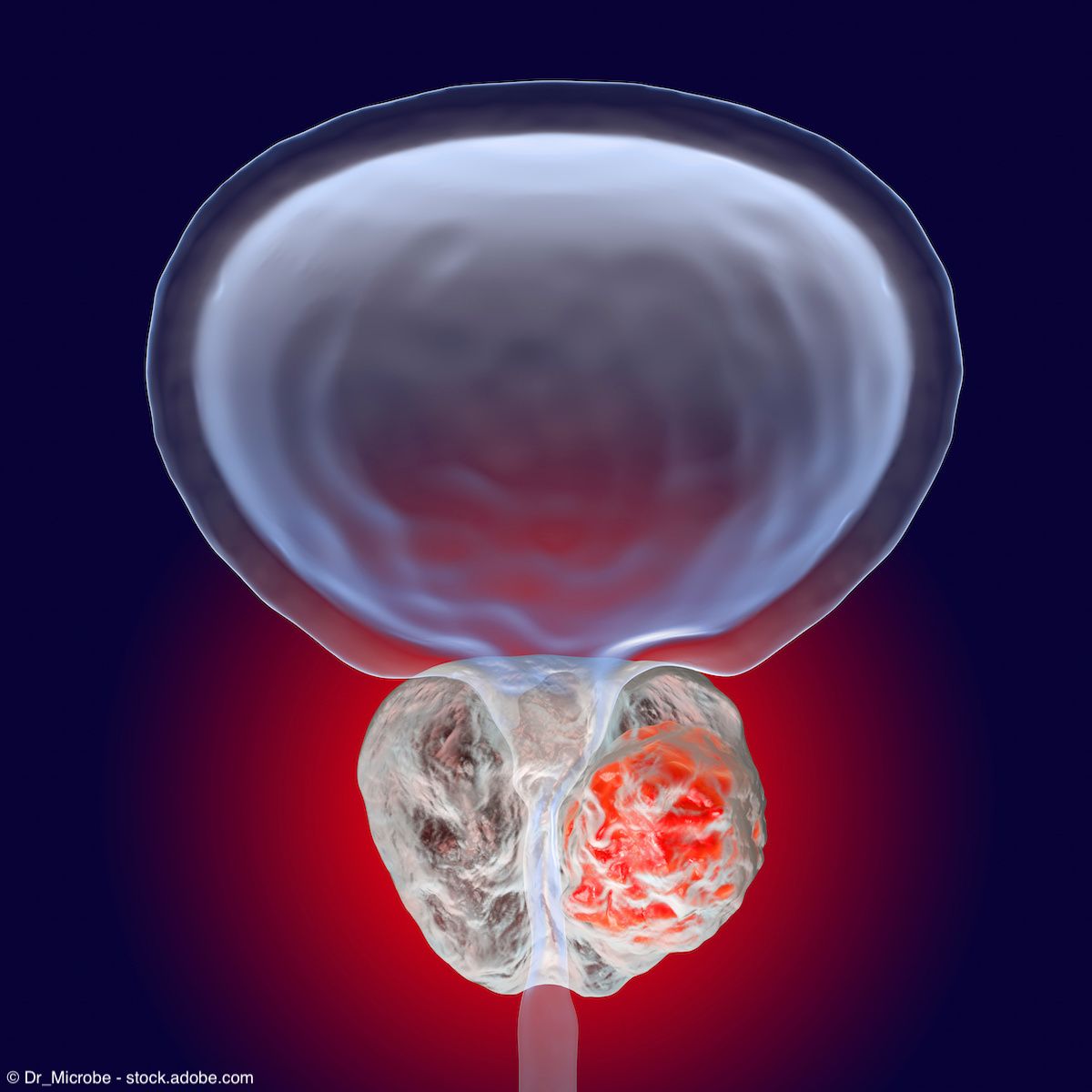News
Article
Adding cetrelimab to niraparib maintenance shows benefit in aggressive variant prostate cancer
Key Takeaways
- The combination of cetrelimab and niraparib improved PFS and OS in AVPC patients compared to niraparib alone, but with significant toxicity.
- Careful patient selection is crucial due to the substantial adverse events associated with the combination therapy.
However, this regimen was associated with substantial toxicity, so careful patient selection is paramount, according to the authors.
The addition of cetrelimab to niraparib maintenance following carboplatin-cabazitaxel (Jevtana)-cetrelimab (anti-PD-1) induction led to an improvement in progression-free survival (PFS) and overall survival (OS) in a subset of men with aggressive variant prostate cancer (AVPC), according to data from the phase 2 C3NIRA trial (NCT04592237) presented at the 2025 American Society of Clinical Oncology (ASCO) Annual Meeting in Chicago, Illinois.1
Ana Aparicio, MD

However, this regimen was associated with substantial toxicity, so careful patient selection is paramount, explained presenting author Ana Aparicio, MD, of MD Anderson Cancer Center in Houston, Texas.
Overall, data showed a median PFS of 8.8 months (95% CI, 3.7 to 15.2) in the niraparib plus cetrelimab arm vs 3.3 months (95% CI, 2.8 to 6.7) in the niraparib alone arm (HR, 0.50; 95% CI, 0.30 to 0.82; P = .02). Further, the median OS was 24.3 months (95% CI, 9.5 to 40.3) in the combination arm vs 10.2 months (95% CI, 6.4 to 19.7) in the monotherapy arm (HR, 0.51; 95% CI, 0.29 to 0.89; P = .04).
In total, 64 patients experienced at least a grade 2 adverse event (AE), and 45 patients experienced at least a grade 3 or 4 AE during the induction. Two patients died due to neutropenic sepsis.
There was also a numerically higher number of AEs with the combination during the maintenance phase. In the combination arm, grade 2 or higher AEs occurred in 20 patients, and grade 3 or higher AEs occurred in 16 patients.
In total, the C3NIRA trial enrolled 120 patients who received an induction course of carboplatin-cabazitaxel-cetrelimab. The investigators found that the addition of an anti-PD-1 agent did not overcome chemotherapy resistance; 35.8% of patients (n = 43) experienced progression prior to randomization and discontinued the study. Additionally, 12.5% of patients (n = 15) discontinued treatment due to toxicity, and 1.7% of patients (n = 2) discontinued treatment for other reasons.
Thus, the maintenance phase of the trial randomly assigned 30 patients to either niraparib plus cetrelimab or niraparib alone.
To be eligible for enrollment, patients needed to have at least 1 AVPC criteria, which included small cell carcinoma morphology; visceral metastases only; lytic bone metastases; bulky nodes or prostate mass; low prostate-specific antigen (PSA) level relative to volume; elevated serum CEA or LDH; primary castration-resistance; combined TP53, RB1, PTEN defects; and RECIST progression with a PSA level less than 1 ng/mL. Patients also needed to have an ECOG score of 0 to 2, adequate organ function, and no prior treatment with carboplatin, cabazitaxel, or a PARP inhibitor.
Of the 120 patients initially enrolled in the study, 25% had prior chemotherapy and 26.9% had liver metastases. The median PSA level was 7.5 ng/mL (IQR, 0.8 to 40.2).
Aparicio noted, “There were no baseline patient characteristics that categorically distinguished the randomized from the nonrandomized patients.”
The primary end point for the trial was PFS from randomization.
Additional data from the trial
The investigators also conducted a preliminary analysis of RNA sequencing data looking at 5 patients with prolonged response vs 5 patients who progressed on chemotherapy.
Aparicio reported, “There was an increase in the proportion of T effector cells and a decrease in the proportion of T regulatory cells in the post-treatment biopsies of the responders, whereas the opposite was true in the posttreatment biopsies of the progressors. These findings are aligned with our clinical observations.”
In looking at clinically available germline mutational data from 92 patients, the results showed that prolonged responses to treatment were not clearly explained by alterations in DNA damage repair genes.
The authors noted, "Ongoing correlates aim to identify biomarkers to select patients for this treatment strategy and reveal candidate mechanisms of resistance to guide future therapeutic combinations.”
Aparicio also concluded, "Adding anti-PD-1 inhibition to platinum-taxane induction followed by PARP inhibitor maintenance can result in meaningful benefit in a subset of men with aggressive variant disease. However, this treatment strategy does carry significant toxicity in this population, and careful patient selection is paramount."
REFERENCE
1. Aparicio A, Tidwell R, Basu S, et al. C3NIRA: Randomized phase II study of carboplatin-cabazitaxel-cetrelimab (anti-PD-1) induction followed by niraparib +/- cetrelimab maintenance in men with aggressive variant prostate cancers (AVPC). J Clin Oncol. 2025;43(suppl 17):5008). doi:10.1200/JCO.2025.43.16_suppl.5008
Newsletter
Stay current with the latest urology news and practice-changing insights — sign up now for the essential updates every urologist needs.















